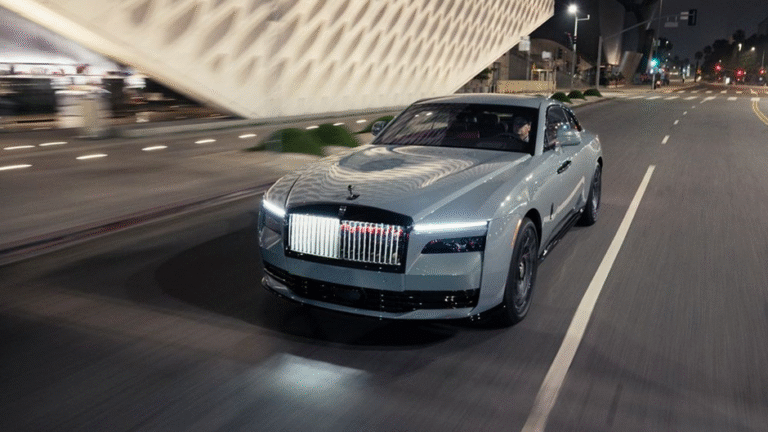Introduction
As an automotive journalist, I test dozens of new cars annually, but few inspire me to spend my own money before a test drive. The 2025 Volvo EX30 was an exception. When pre-orders opened in early 2024, I placed a $500 refundable deposit, captivated by its debut in New York. With sleek styling, robust power, a respectable electric range, and a $35,000 starting price from a trusted automaker, the EX30 seemed to deliver on the electric vehicle (EV) revolution’s promise. Yet, the reality fell short.

Vehicle Overview
- Model: 2025 Volvo EX30 Twin Motor Performance Ultra
- Base Price: $46,600 (excluding destination)
- As-Tested Price: $48,395 (including destination)
- Battery: 69 kWh NMC
- Charging: 153 kW DC fast-charging; 10% to 80% in ~27 minutes
- Cargo Volume: 31.9 cubic feet
- Output: 422 hp, 400 lb-ft torque
- Drive Type: Dual-motor all-wheel-drive
- Weight: 4,155 lbs
- EPA Range: 253 miles
Pricing and Market Challenges
The EX30’s allure was its $35,000 starting price for the Single Motor Extended Range rear-wheel-drive model. However, U.S. buyers are currently limited to the Twin Motor Performance all-wheel-drive version, starting at $46,195. This price hike stems from production in China, owned by Volvo’s parent company, Geely Group. U.S. tariffs on Chinese-made vehicles, escalating from 27.5% in 2018 to 100% in mid-2024 under the Biden administration, with further increases proposed, disrupted Volvo’s cost-absorption plans. This forced a shift to the pricier dual-motor model, delaying its U.S. launch. Ultimately, I canceled my order and leased a Kia EV6 instead.
Performance and Driving Impressions
The EX30’s 69 kWh battery powers a dual-motor setup, delivering an impressive 422 horsepower and 400 lb-ft of torque, achieving 0-60 mph in 3.4 seconds—remarkable for a Volvo. However, its 253-mile EPA range is underwhelming compared to competitors like the Tesla Model Y or Hyundai Ioniq 5. Fast-charging at 153 kW is average, with a test from 21% to 50% charge taking nine minutes at a peak of 140 kW, suggesting Volvo’s 27-minute 10%-80% claim is optimistic.
Despite its speed, the EX30’s driving dynamics disappoint. The ride is jarringly firm, the steering feels loose even in performance mode, and cornering lacks confidence. Designed as an affordable European city car, its high power feels mismatched with its chassis, making it less engaging than expected. Its compact size (166.7 inches long, shorter than a Honda Civic Hatchback) shines in urban environments like New York City, offering nimble handling reminiscent of a Mini Cooper S.
Design and Interior

The EX30’s exterior is striking, embracing its EV identity with a grille-less front and vibrant color options like Moss Yellow and Cloud Blue. Practical touches, like cargo space etchings and a sliding center console with a removable rear storage container, add charm.
However, the interior prioritizes cost-cutting minimalism, inspired by Tesla but with a Scandinavian flair. A single tablet-style center screen controls nearly all functions, lacking a driver-facing display. Window controls, limited to two on the center console, require toggling between front and rear settings. The Google Built-In system integrates Google Maps and Android apps effectively, but the interface is sluggish and unintuitive, requiring excessive menu navigation. Safety alerts, triggered when looking at the screen while driving, are persistent and must be manually disabled each trip, becoming frustrating. The interior’s low-grade plastics detract from its recycled material ethos, feeling cheap for a near-$50,000 vehicle.
Verdict
The EX30 held immense promise at $35,000, but at $48,395, it struggles to compete. Its quirks—firm ride, vague steering, and cumbersome controls—might have been forgivable at the lower price, but not against rivals like the Volvo EX40, Tesla Model Y, or Hyundai Ioniq 5, which offer better range and refinement. In Europe, where it’s the second-best-selling EV behind the Model Y, varied pricing options bolster its appeal. In the U.S., tariffs and pricing missteps make it a cautionary tale of market volatility. While its speed and compact size are highlights, the EX30 falls short of its game-changing potential. Volvo may address these issues over time, but for now, it’s a missed opportunity.



